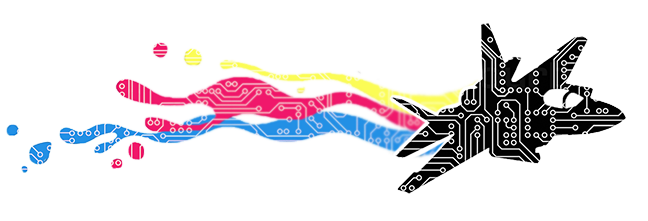One great aspect of printed circuits is that they can really cut down the weight of the overall project. Sometimes, you still need to be able to program your circuits and have a little more power behind it. Arduino's are great but they can get very large and expensive for smaller projects. Therefore, I have created a tutorial on how to use an Arduino to program a much smaller AVR chip, the ATtiny. These have many of the same functionalities as Arduino, but allow you to incorporate them into much smaller designs. Many of the circuits that will be printed on this blog will involve these AVR chips and the tutorial for it can be found here.
Tuesday, June 23, 2015
Friday, June 19, 2015
Side Project: Controlling a Stepper Motor with an Arduino
When disassembling the printer, some stepper motors were salvaged from it. A stepper motor consists of two main parts, a rotor and a stator. The rotor is the part of the motor that actually spins and provides work. The stator is the stationary part of the motor that houses the rotor. In a stepper motor, the rotor is a permanent magnet. The stator consists of multiple coils that act as electromagnets when an electrical current is passed through them. The electromagnetic coil will cause the rotor to align with it when charged. The rotor is propelled by alternating which coil has a current running through it.
Stepper motors have a number of benefits. They are cheap and easy to use. When there is no current send to the motor, the steppers firmly hold their position. Stepper motors can also rotate without limits and change direction based on the polarity provided.
Stepper motors have a number of benefits. They are cheap and easy to use. When there is no current send to the motor, the steppers firmly hold their position. Stepper motors can also rotate without limits and change direction based on the polarity provided.
A tutorial of how to operate these stepper motors with an Arduino was created and can be found here.
Disassembling a Brother MFC-J450DW Printer
To better utilize the MFC-J450DW printer, it became necessary to take it apart. This would allow for unnecessary features (such as scanning and faxing) to be removed while at the same time gaining insight on how exactly this model handles printing. A rough step by step guide of the tare down can be found here.
Surprisingly it was found that this printer does not print directly from the print cartridges themselves. Instead, the cartridges merely act as a reservoir to hold the ink before they are pumped up to the actual print head. More so, these pumps came pre-charged with ink. This means that to use this printer for printing circuits the reservoirs, tubes, and pumps must first be cleaned as to not contaminate the ink. It is recommended to find a printer that prints directly from the cartridges themselves so there is a less chance of contamination.
Subscribe to:
Posts (Atom)



